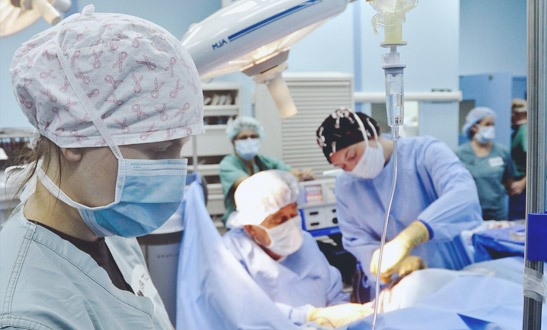Being a Surgeon Can Be Dangerous to Your Health
Category : Uncategorized
NEW YORK (Reuters Health) – In a survey of occupational injuries in oncologic surgeons at the University of Texas MD Anderson Cancer Center, 90{d3f6bf636dd0cfcc6b6abf6b418bf47c67e9ef114d0af9c178a3c3b139ba13ad} of the surgeons reported musculoskeletal symptoms and 28{d3f6bf636dd0cfcc6b6abf6b418bf47c67e9ef114d0af9c178a3c3b139ba13ad} reported an injury or condition attributed to operating, most of which required some form of treatment.
Based on responses from 127 of 219 surgeons invited to participate in the survey, the most common symptoms were fatigue, discomfort, stiffness, and back pain.
Of the 27.6{d3f6bf636dd0cfcc6b6abf6b418bf47c67e9ef114d0af9c178a3c3b139ba13ad} who reported an occupational injury, 65.7{d3f6bf636dd0cfcc6b6abf6b418bf47c67e9ef114d0af9c178a3c3b139ba13ad} received treatment, according to Dr. Rachel K. Voss, now at the UC San Diego Medical Center, and colleagues. More than a sixth of those treated required surgery for their injury, the researchers note in the Journal of the American College of Surgeons, online September 29.
The team also conducted a two-day randomized cross-over pilot study of intraoperative foot mat use. The use of anti-fatigue mats is recommended by the Occupational Safety and Health Administration (OSHA) to help prevent trauma and pain in the lower extremities in operating rooms.
Of the 20 surgeons who took part in the ergonomic intervention, 65{d3f6bf636dd0cfcc6b6abf6b418bf47c67e9ef114d0af9c178a3c3b139ba13ad} liked the experience and said they would use the mat again; 70{d3f6bf636dd0cfcc6b6abf6b418bf47c67e9ef114d0af9c178a3c3b139ba13ad} said they would recommend the mat to a colleague and 45{d3f6bf636dd0cfcc6b6abf6b418bf47c67e9ef114d0af9c178a3c3b139ba13ad} said it helped reduce surgery-related symptoms.
“Mat use was, however, statistically significantly associated with increased discomfort, with an associated wide confidence interval,” the researchers write in their report.
“Interestingly,” Dr. Voss told Reuters Health by email, “the majority of surgeons said they would use the mat again despite no statistical evidence for symptom improvement. It is important to know however that some individuals did report symptom improvement with the mat even if the group as a whole did not appear to benefit. Foot mats may benefit some individuals but are certainly not a ‘magic bullet’ for improving occupational symptoms.”
In general, Dr. Voss said her “perception is that surgeons have been operating with pain and discomfort and experiencing occupation-related injury for years in relative silence. We need to do better for our own health and for our patients.”
“Institutions and employers could make ergonomic and policy improvements to protect the health of surgeons but initiatives would be more successful with surgeon involvement,” she added. “Surgeons need to engage in better dialogue with occupational hygiene experts and industry experts to push for change. Of course, more research is needed, but being open to changes in the operating room environment and not settling for occupation-related symptoms and injuries is the first step.”
Dr. Voss said that “a surprise finding was that men were more likely to report an injury or chronic condition attributed to operating than women, contrary to prior reports. Furthermore, the rate of injury did not seem to correspond to experiencing occupational symptoms.”
Dr. John Thayer, chief of cardiothoracic surgery at St. Francis Hospital and Medical Center in Hartford, Connecticut, told Reuters Health by email that the “study raises an important issue that is not usually discussed among surgeons.”
“The study points out that over 90{d3f6bf636dd0cfcc6b6abf6b418bf47c67e9ef114d0af9c178a3c3b139ba13ad} of oncologic surgeons experience musculoskeletal discomfort due to the ergonomic hazards associated with operating,” said Dr. Thayer, who was not involved in the research.
“This is an important topic and emphasizes the need for more study and training in ergonomics as applied to the operating room,” he added. “It also reinforces the need for the surgeon to maintain fitness and flexibility despite demanding operative schedules.”
SOURCE: http://bit.ly/2epXIbl
J Am Coll Surg 2016.
